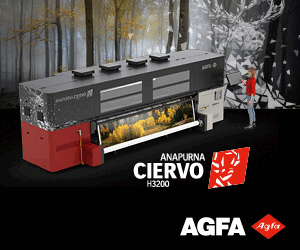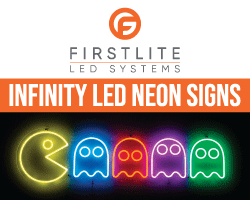
Expert Advice from Megan Woodcock, Managing Director, FirstLite LED Systems
Everyone loves a true neon sign. They just have a look and feel to them that conjures images of places where nightlife is everything. The casinos of Las Vegas, the nightclubs of London, and so much more.
You may be surprised, but even as a supplier of LED signs, I am broadly in agreement with recent articles about how the naming of some LED products as neon is detrimental to the neon sign industry. Creating true neon signs is a craft, but sadly one that is very much in decline. It is now on the Heritage Crafts Association’s Red List of Endangered Crafts.
Traditional Neon signs retain a timeless allure. Their warm, nostalgic glow carries a classic aesthetic that resonates with certain brand identities. For businesses aiming to evoke a vintage or retro vibe, traditional neon signs continue to hold a special place.
Unlike the straightforward setup of LED neon signs, traditional neon requires the expertise of skilled professionals for intricate and delicate handling. The delicate glass tubes, filled with gas, demand meticulous installation to achieve the desired aesthetic and prevent potential safety hazards.
The necessity for expert installation underscores the craftsmanship involved in traditional neon signage. Specialised artisans, well-versed in the nuances of neon tube bending and gas filling, play a critical role in ensuring that each neon sign meets the highest standards of quality and safety. This level of craftsmanship contributes to the enduring charm of traditional neon signs, as businesses recognise the value of investing in skilled professionals to bring their artistic vision to life.
It is hard for neon, though, because LED alternatives come with a host of financial, environmental and practicality advantages that traditional neon simply can’t compete with when it comes to many modern signage requirements.



Advantages of LED Neon-style solutions
Cost Efficiency: The manufacturing process of creating LED neon signage is much more streamlined than true neon. This reduces production costs significantly. Additionally, the raw materials used are more affordable, making it a cost-effective choice for businesses.
Running Costs: LED neon boasts impressive energy efficiency, consuming significantly less power than traditional neon signs. This not only results in lower electricity bills but also aligns with the growing emphasis on sustainable and eco-friendly practices.
Safety First: Traditional neon signs rely on gas-filled glass tubes, whereas LED lights operate without hazardous materials, so there are no safety concerns associated with gas leaks. This makes it a safer choice for installation and maintenance.
Versatile Colours and Quick Production: LED provides a range of colours within the same unit, which is not something neon can do. This means you can have seamless colour changes that cater to a range of applications. LED signs are also quicker and more efficient to produce than traditional neon signs, enabling businesses to meet tight deadlines for promotional campaigns or events.
Flexibility in Design: LED flexibility extends beyond its visual appeal. Its pliability allows for intricate designs and adaptability to various surfaces, providing businesses with unlimited creative possibilities for their signage.
In conclusion, the LED neon-style lighting vs traditional true-neon debate hinges on factors like cost, energy efficiency, safety, and design flexibility. While LED undoubtedly offers modern advantages, the enduring charm of traditional neon ensures its continued relevance. Businesses are now presented with a rich palette of choices, allowing them to tailor their signage to align with their brand identity and aesthetic preferences.
However, words are important. And it is right that LED systems that are replicating neon signs should be described as such. They should always be called LED neon and not just neon. To protect what is a much-loved and important craft, the description should indeed be accurate and not misleading.


















